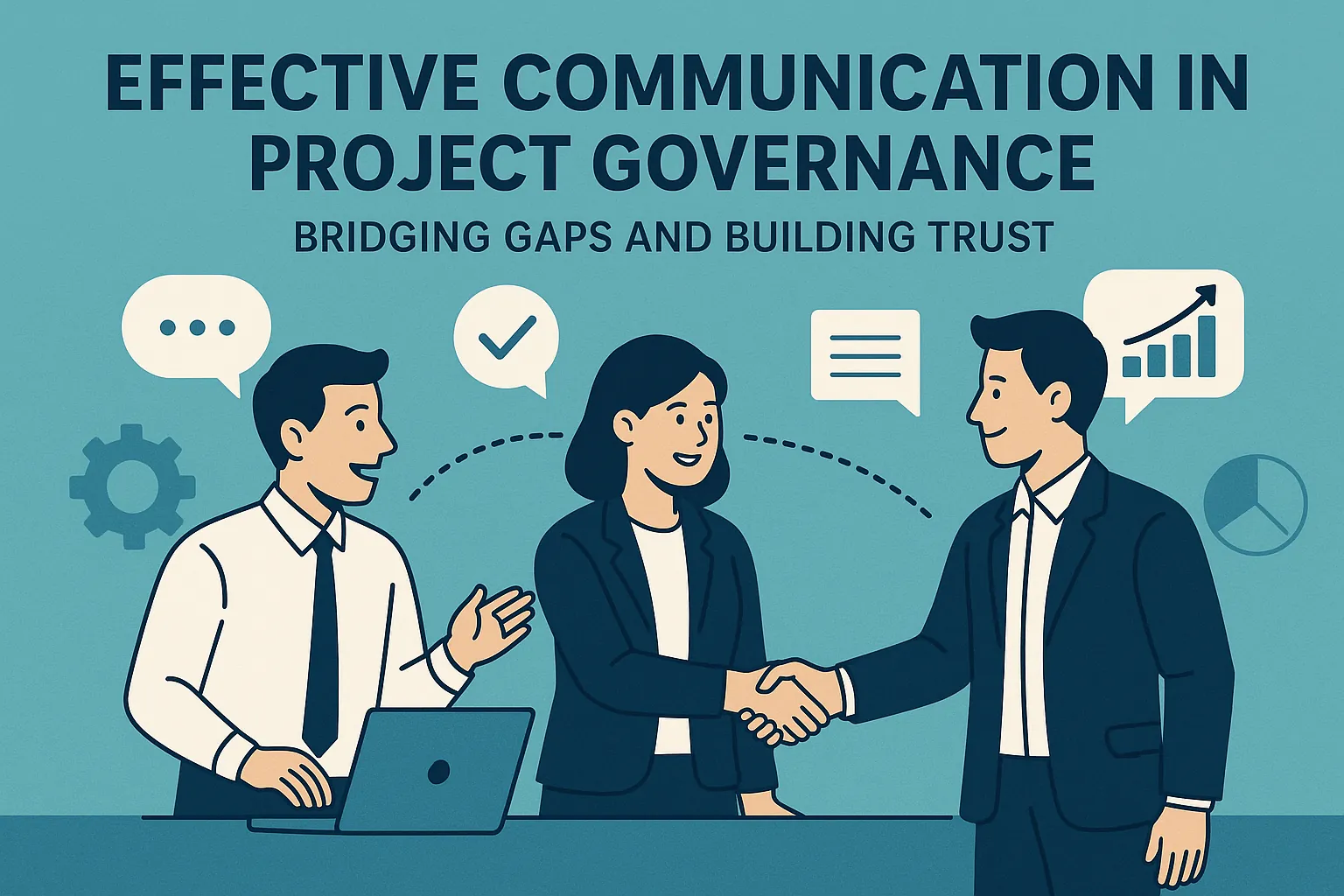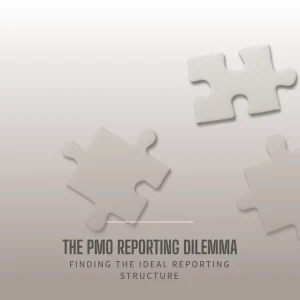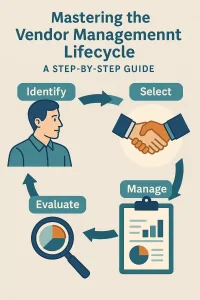Introduction
Project governance serves as a foundational framework that guides the decision-making processes, accountability, and overall direction of a project. It encompasses a set of policies, regulations, and practices that ensure projects are executed efficiently and align with organizational goals. The key components of project governance typically include:
- Roles and Responsibilities: Clearly defined roles for stakeholders, including project sponsors, project managers, and team members, which help delineate accountability and authority.
- Decision-Making Processes: Established procedures for making critical project decisions, ensuring that all stakeholders have a voice and that decisions are made transparently.
- Performance Monitoring: Mechanisms for tracking project progress against objectives, including metrics and reporting structures that facilitate oversight and evaluation.
- Risk Management: Strategies for identifying, assessing, and mitigating risks throughout the project lifecycle, which are essential for maintaining project integrity and success.
Effective communication is a cornerstone of successful project governance. It fosters collaboration among stakeholders, ensures that everyone is aligned with project objectives, and helps to build trust within the project team. Here are several reasons why communication is vital within governance frameworks:
- Clarity and Transparency: Open lines of communication help clarify expectations and reduce misunderstandings, which can lead to project delays or failures. When stakeholders are informed about project developments, they are more likely to support decisions and initiatives.
- Engagement and Collaboration: Effective communication encourages stakeholder engagement, allowing for diverse perspectives to be considered in decision-making processes. This collaborative approach not only enhances the quality of decisions but also strengthens relationships among team members.
- Conflict Resolution: In any project, conflicts may arise due to differing opinions or interests. A robust communication strategy enables timely resolution of conflicts, minimizing disruptions and maintaining project momentum.
As we delve deeper into the topic of project governance, it is essential to explore real-world examples that illustrate how effective communication can bridge gaps and build trust among stakeholders. These examples will highlight best practices and lessons learned, providing valuable insights for project managers and communication specialists alike.
Understanding Project Governance
Effective project governance is essential for ensuring that projects are executed successfully, aligning with organizational goals, and delivering value. It encompasses a framework that defines the structure, processes, and stakeholders involved in project management. Here’s a comprehensive overview of the key elements of project governance, the various frameworks utilized, and the critical relationship between governance and project success.
Key Elements of Project Governance
Structure:
- The governance structure outlines the hierarchy and roles within a project. It typically includes a steering committee, project sponsors, and project managers, each with defined responsibilities. This structure ensures accountability and clarity in decision-making processes.
- A well-defined structure facilitates effective communication among stakeholders, which is crucial for addressing issues promptly and maintaining project momentum.
Processes:
- Governance processes involve the methodologies and practices that guide project execution. These processes include planning, monitoring, and controlling project activities to ensure they align with strategic objectives.
- Effective processes help in risk management, resource allocation, and performance evaluation, ensuring that projects stay on track and within budget.
Stakeholders:
- Stakeholders are individuals or groups with an interest in the project’s outcome. This includes project team members, sponsors, clients, and end-users. Engaging stakeholders throughout the project lifecycle is vital for gathering input, managing expectations, and fostering collaboration.
- Clear communication with stakeholders helps build trust and ensures that their needs and concerns are addressed, which is essential for project success.
Governance Frameworks in Project Management
Several governance frameworks are widely used in project management, each offering unique methodologies and best practices:
PRINCE2 (Projects IN Controlled Environments):
- PRINCE2 is a structured project management method that emphasizes organization and control throughout the project lifecycle. It defines clear roles and responsibilities, stages of project delivery, and processes for managing risks and issues.
- This framework is particularly effective in environments where projects are complex and require a high level of governance.
PMBOK (Project Management Body of Knowledge):
- PMBOK provides a comprehensive set of guidelines and standards for project management. It outlines processes, tools, and techniques that project managers can use to ensure effective governance.
- The PMBOK framework emphasizes the importance of stakeholder engagement and communication, which are critical for successful project outcomes.
The Relationship Between Governance and Project Success
The relationship between governance and project success is profound. Effective governance frameworks provide the necessary oversight and direction that projects need to thrive. Here are some key points highlighting this relationship:
- Alignment with Organizational Goals: Strong governance ensures that projects align with the strategic objectives of the organization. This alignment is crucial for securing stakeholder buy-in and ensuring that resources are allocated effectively.
- Risk Management: Governance frameworks facilitate proactive risk management by establishing processes for identifying, assessing, and mitigating risks. This proactive approach minimizes the likelihood of project failure and enhances the chances of success.
- Enhanced Communication: Effective governance promotes open lines of communication among stakeholders, which is essential for addressing challenges and making informed decisions. This communication fosters a collaborative environment that is conducive to project success.
- Accountability and Transparency: A robust governance structure establishes accountability and transparency, which are vital for building trust among stakeholders. When stakeholders trust the governance process, they are more likely to support the project and contribute positively to its success.
The Critical Role of Communication
Effective communication is a cornerstone of successful project governance, serving as the vital link that connects various stakeholders, ensures transparency, and fosters accountability. Where diverse teams and interests converge, the ability to communicate clearly and effectively can significantly influence project outcomes. Here are some key points that illustrate the pivotal role of communication within governance frameworks:
- Fostering Transparency and Accountability: Communication is essential for creating an environment of transparency in project governance. When project managers share information openly about project goals, progress, and challenges, it builds trust among stakeholders. This transparency not only keeps everyone informed but also holds team members accountable for their roles and responsibilities. Regular updates and open channels for feedback encourage a culture where issues can be addressed promptly, reducing the likelihood of misunderstandings and conflicts.
- Aligning Stakeholder Expectations: In any project, stakeholders come with varying expectations and interests. Effective communication plays a crucial role in aligning these expectations. By engaging stakeholders through regular meetings, updates, and consultations, project managers can ensure that everyone is on the same page regarding project objectives, timelines, and deliverables. This alignment is vital for minimizing resistance and fostering collaboration, as stakeholders feel their voices are heard and their concerns are addressed.
- Impact on Decision-Making and Problem-Solving: The quality of communication directly affects decision-making processes within project governance. Clear and concise communication enables project managers to present data, insights, and recommendations effectively, facilitating informed decision-making. Moreover, when team members communicate openly about challenges and potential solutions, it enhances problem-solving capabilities. A culture that encourages dialogue and brainstorming can lead to innovative solutions and quicker resolutions to issues that may arise during the project lifecycle.
Bridging Gaps in Communication
Effective communication is a cornerstone of successful project governance. It ensures that all stakeholders are aligned, informed, and engaged throughout the project lifecycle. However, various barriers can impede this communication, leading to misunderstandings, misalignment, and ultimately, project failure. Below, we explore common communication gaps in project governance, propose strategies to overcome these barriers, and provide examples of governance failures attributed to poor communication.
Barriers to Effective Communication in Governance
- Lack of Clarity: Ambiguity in project goals, roles, and responsibilities can create confusion among team members and stakeholders. When communication is not clear, it can lead to misinterpretations and a lack of accountability.
- Cultural Differences: In global projects, cultural diversity can pose significant challenges. Different communication styles, languages, and cultural norms can lead to misunderstandings and hinder collaboration.
- Information Overload: While keeping stakeholders informed is crucial, overwhelming them with excessive information can lead to disengagement. Stakeholders may miss critical updates or fail to prioritize important messages.
- Inconsistent Messaging: When different project leaders or teams communicate varying messages, it can create distrust and confusion among stakeholders. Consistency in communication is vital for maintaining credibility.
- Limited Stakeholder Engagement: Failing to involve stakeholders in the communication process can lead to a lack of buy-in and support. When stakeholders feel excluded, they may not fully understand the project’s objectives or their role within it.
Strategies for Overcoming Communication Barriers
- Regular Updates: Implementing a structured schedule for updates can help keep all stakeholders informed. Regular meetings, newsletters, or project dashboards can provide consistent information and foster transparency.
- Stakeholder Engagement: Actively involving stakeholders in discussions and decision-making processes can enhance their understanding and commitment. Techniques such as surveys, focus groups, and workshops can facilitate engagement and gather valuable feedback.
- Clear Communication Channels: Establishing designated communication channels (e.g., project management tools, email lists) can streamline information sharing. Clearly defining how and when information will be communicated helps set expectations.
- Cultural Sensitivity Training: Providing training on cultural awareness can help team members understand and respect diverse communication styles. This can improve collaboration and reduce misunderstandings in multicultural teams.
- Feedback Mechanisms: Creating avenues for feedback allows stakeholders to voice concerns and suggestions. This two-way communication fosters trust and ensures that all voices are heard.
Examples of Governance Failures Due to Communication Gaps
- The Denver International Airport Project: This project faced significant delays and cost overruns, largely due to poor communication among stakeholders. The lack of clear communication regarding project specifications and expectations led to misunderstandings and ultimately, a failure to meet deadlines.
- The NHS IT Project in the UK: This initiative was plagued by communication issues, including inconsistent messaging and a lack of stakeholder engagement. As a result, the project was deemed a failure, costing billions without delivering the promised benefits.
- The Boeing 737 Max Crisis: Communication failures between engineering teams and management contributed to the tragic accidents involving the 737 Max. Inadequate information sharing about safety concerns and design flaws led to a breakdown in governance, resulting in loss of trust and significant financial repercussions for Boeing.
Building Trust Through Communication
Effective communication is a cornerstone of successful project governance, playing a pivotal role in establishing and maintaining trust among stakeholders. In project management, trust is not merely a soft skill; it is a critical component that influences decision-making, collaboration, and overall project success. Here, we explore the importance of trust in project governance, methods for fostering it through communication, and real-world examples that illustrate these principles in action.
Importance of Trust in Project Governance
- Foundation of Collaboration: Trust enables stakeholders to collaborate more effectively. When team members and stakeholders trust one another, they are more likely to share ideas, voice concerns, and contribute to problem-solving efforts. This collaborative spirit is essential for navigating the complexities of project management.
- Facilitates Decision-Making: In a governance framework, trust allows for quicker and more effective decision-making. Stakeholders who trust the project manager and each other are more inclined to accept decisions and support the project’s direction, reducing the likelihood of conflicts and misunderstandings.
- Enhances Stakeholder Engagement: Trust fosters a sense of ownership among stakeholders. When they feel valued and heard, they are more likely to engage actively in the project, leading to better outcomes and higher satisfaction levels.
Methods for Building Trust Through Open and Honest Communication
- Transparent Communication: Regularly share project updates, challenges, and successes with all stakeholders. Transparency helps to demystify the project process and reassures stakeholders that they are kept in the loop. This can be achieved through weekly status reports, newsletters, or dedicated project meetings.
- Active Listening: Encourage feedback and actively listen to stakeholders’ concerns and suggestions. This not only shows respect for their opinions but also helps identify potential issues early on. Implementing a feedback loop where stakeholders can express their thoughts can significantly enhance trust.
- Consistent Messaging: Ensure that all communications are consistent and aligned with the project’s goals and values. Mixed messages can lead to confusion and erode trust. Establishing a clear communication plan that outlines key messages and channels can help maintain consistency.
- Empathy and Understanding: Acknowledge the emotions and perspectives of stakeholders. Demonstrating empathy in communication can help build rapport and trust, especially during challenging times. This can be as simple as recognizing the stress that project deadlines may impose on team members.
- Conflict Resolution: Address conflicts promptly and constructively. Openly discussing disagreements and working towards a resolution can strengthen trust. Stakeholders are more likely to trust a project manager who handles conflicts transparently and fairly.
Best Practices for Effective Communication in Governance
Effective communication is a cornerstone of successful project governance. It not only ensures that all stakeholders are aligned with the project goals but also fosters trust and transparency. Here are some best practices that project managers and communication specialists can implement to enhance communication within governance frameworks:
1. Establish Clear Communication Channels
- Define Roles and Responsibilities: Clearly outline who is responsible for what in the communication process. This helps prevent misunderstandings and ensures accountability.
- Use Multiple Channels: Utilize a mix of communication methods (e.g., emails, meetings, instant messaging) to cater to different preferences and situations. This ensures that information is accessible to all stakeholders.
2. Foster an Open Communication Culture
- Encourage Transparency: Promote an environment where team members feel comfortable sharing their thoughts and concerns. This can be achieved through regular check-ins and open-door policies.
- Active Listening: Train team members to practice active listening, which involves fully concentrating, understanding, and responding thoughtfully to others. This builds trust and encourages more open dialogue.
3. Utilize Technology and Tools
- Project Management Software: Tools like Trello, Asana, or Microsoft Project can help streamline communication by providing a centralized platform for updates, task assignments, and deadlines.
- Collaboration Tools: Platforms such as Slack or Microsoft Teams facilitate real-time communication and collaboration, making it easier for teams to stay connected and informed.
4. Regular Updates and Reporting
- Scheduled Updates: Implement regular status updates to keep all stakeholders informed about project progress, challenges, and changes. This can be done through weekly meetings or bi-weekly reports.
- Visual Reporting: Use dashboards and visual aids to present data and project status clearly. Visuals can help convey complex information more effectively than text alone.
5. Encourage Continuous Feedback
- Feedback Loops: Establish mechanisms for ongoing feedback from team members and stakeholders. This can include surveys, suggestion boxes, or regular feedback sessions.
- Iterative Improvement: Use feedback to refine communication processes continuously. This not only improves the current project but also sets a precedent for future projects.
6. Training and Development
- Communication Skills Training: Invest in training programs that enhance communication skills among team members. This can include workshops on effective writing, presentation skills, and conflict resolution.
- Role-Specific Training: Tailor training sessions to address the specific communication needs of different roles within the project team, ensuring that everyone is equipped to communicate effectively.
By implementing these best practices, project managers and communication specialists can significantly enhance communication within governance frameworks. This not only leads to more successful project outcomes but also builds a culture of trust and collaboration among all stakeholders.
Conclusion
Effective communication stands as a cornerstone that not only bridges gaps but also fosters trust among stakeholders. Throughout this discussion, we have highlighted several key aspects of how communication influences governance frameworks:
- Bridging Gaps: Clear and consistent communication is essential for identifying and addressing misunderstandings or misalignments among team members and stakeholders. By ensuring that everyone is on the same page, project managers can mitigate risks and enhance collaboration, leading to more successful project outcomes.
- Building Trust: Trust is a vital component of any governance structure. Open lines of communication encourage transparency and accountability, which are crucial for establishing and maintaining trust. When stakeholders feel informed and involved, they are more likely to support project initiatives and contribute positively to the project’s success.
As project managers and communication specialists, it is imperative to regularly assess your current communication practices. Consider whether your strategies effectively facilitate dialogue and whether they are adaptable to the needs of your team and stakeholders. Are there areas where communication could be improved to enhance governance?
Find out more about Shaun Stoltz https://www.shaunstoltz.com/about/.
This post was written by an AI and reviewed/edited by a human.



